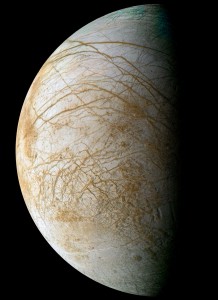Just how lonely are we in the universe…or how crowded is it?
Astrobiology, the study of the origins of life in the universe and the search for life on other worlds, is a highly interdisciplinary quest.

Narrow jets of gas and icy particles erupt from the south polar region of Enceladus, contributing to the moon’s giant plume. A cycle of activity in these small-scale jets may be periodically lofting extra particles into space, causing the overall plume to brighten dramatically.
Credits: NASA/JPL/Space Science Institute
It’s a rapidly changing field at the intersection of biology, chemistry, geology, planetary science, and physics.
Recent scientific advances have opened new doors for astrobiological inquiry and at the request of NASA and Congress, the National Academies of Sciences, Engineering, and Medicine (NASEM) appointed a committee to develop a future research strategy for the field of astrobiology.
Briefing event
Wed, October 10, 2018
11:00 AM – 12:00 PM EDT
To join in on this public briefing event and webcast in which committee chair Barbara Sherwood Lollar and committee member Alan Boss will discuss the report’s recommendations and take questions from the audience.
The strategy will outline scientific questions, challenges, and opportunities in the search for signs of extraterrestrial life both within and outside the Solar System. This new strategy updates a previous strategy released in 2015.
Combined with the Exoplanet Science Strategy the National Academies released last month, the astrobiology strategy will inform the upcoming astronomy and astrophysics decadal survey and, ultimately, the planning of future NASA science missions.
Go to:



